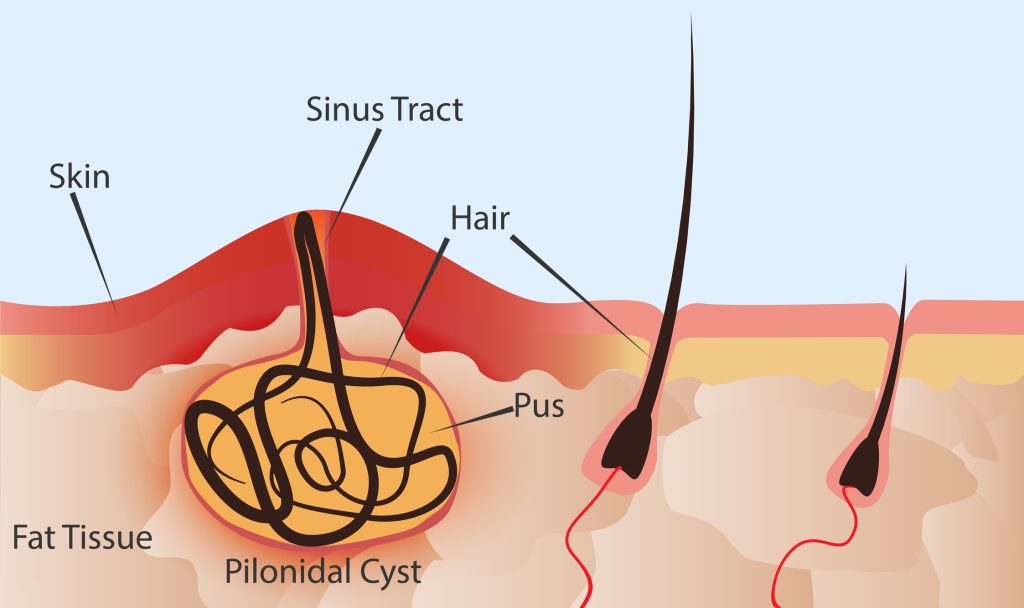Pilonidal disease is a painful inflammatory disease that occurs when cysts form between the buttocks. These cysts often recur following standard treatment with razors or creams. Peter C. Minneci, MD, Chair of Surgery at Nemours Children’s Health in Delaware Valley, recently conducted a study1 that looked at the use of laser hair removal in these patients. He spoke to The Derm Digest about the results and their potential implications.
TDD: Why is this topic important?
Peter C. Minneci, MD: “Pilonidal disease is relatively common and affects up to 1% of the population starting in adolescence and up until young adulthood. It’s often a recurrent or chronic issue, it can be painful and can have a large impact on one’s quality of life socially, emotionally, and physically. If left untreated and the disease does become chronic for a patient, there can be a need for surgical interventions or other treatments, which all have varying impacts, risks, and morbidity. Therefore, when you consider its prevalence, rate of recurrence, as well as complications, anything that can improve or decrease the rates of recurrence of pilonidal disease is going to have a significant impact on many patients and is worth studying. “
TDD: What did you learn from this study?
Dr. Minneci: “Currently, standard treatments being offered or recommended to patients with pilonidal disease is hair removal, using razors or creams, as well as keeping the area clean. Knowing that patient compliance with this type of regimen is often difficult to achieve, this study sought to use laser epilation, more commonly referred to as laser hair removal, as an adjunct method to garner a significant long-term reduction in hair growth.
The study compared using laser hair removal in addition to the current standard of care. Half of the participants were assigned to receive laser epilation plus standard treatment, and half were assigned to receive standard treatment alone. After one year, 10.4% of the patients who had received laser epilation plus standard treatment had experienced a recurrence, compared with 33.6% of patients in the group who had received standard treatment alone. There were no significant differences between the two groups in terms of complications, disability days, health care satisfaction, or perceived stigma.
These results provide further evidence that laser epilation is safe, well-tolerated, and should be available as an initial treatment option or adjunct treatment modality for all eligible patients. “
TDD: What can readers do to improve access to this treatment for patients with pilonidal disease?
Dr. Minneci: “The biggest next step is advocacy. Now that we have these additional results on the benefits of laser hair removal, we need to advocate for insurance to cover these treatments for patients who need them. This disease often presents with pain and discomfort, and it can be embarrassing and potentially socially isolating. Receiving this treatment in a medical setting, where professionals are sensitive to their experience, would be beneficial. If this procedure is covered by insurance, it will become widely available, allowing for more equitable treatment of all patients with pilonidal disease. “
1. Minneci PC, Gil LA, Cooper JN, et al. Laser Epilation as an Adjunct to Standard Care in Reducing Pilonidal Disease Recurrence in Adolescents and Young Adults: A Randomized Clinical Trial. JAMA Surg. Published online November 08, 2023. doi:10.1001/jamasurg.2023.552


